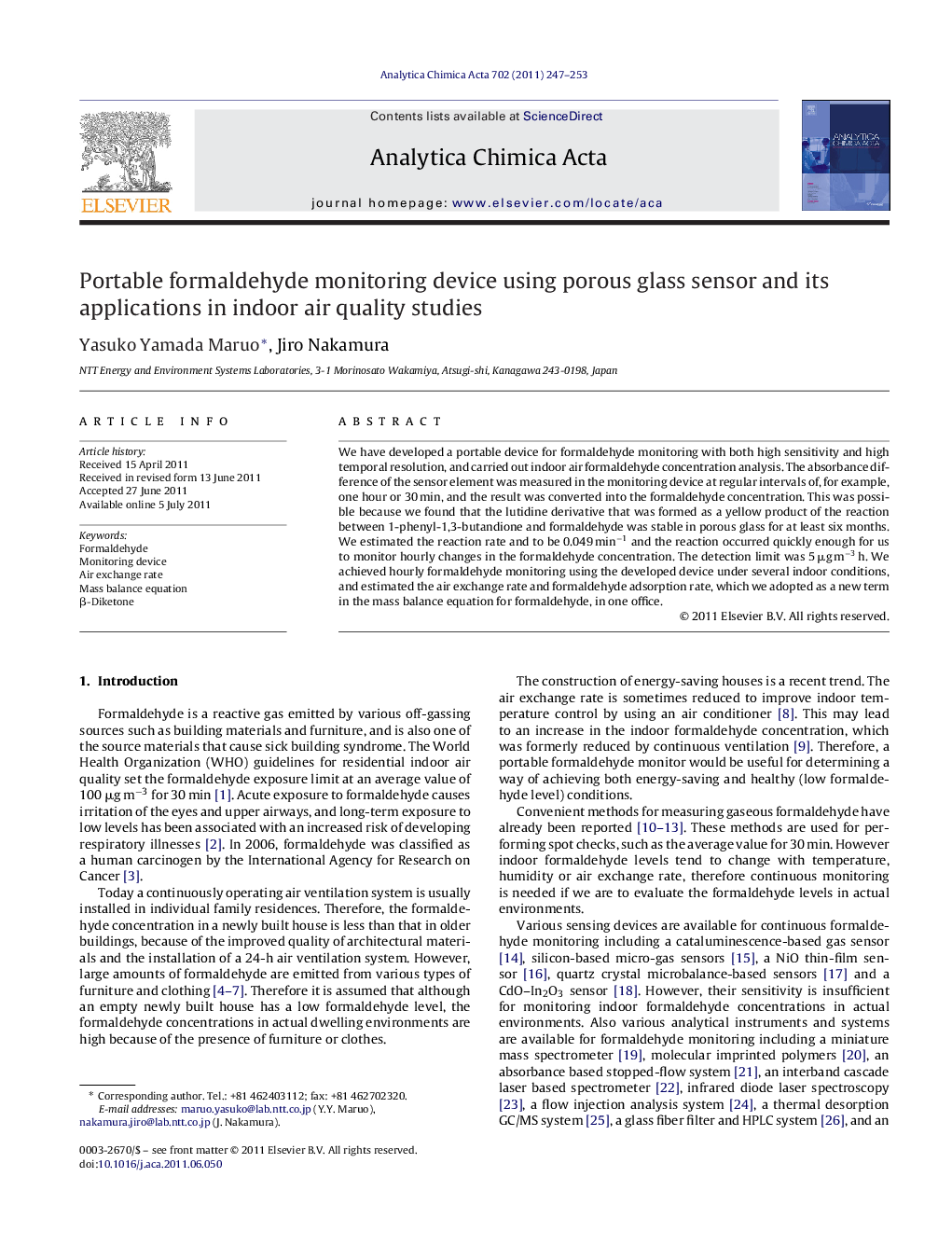| Article ID | Journal | Published Year | Pages | File Type |
|---|---|---|---|---|
| 1166830 | Analytica Chimica Acta | 2011 | 7 Pages |
We have developed a portable device for formaldehyde monitoring with both high sensitivity and high temporal resolution, and carried out indoor air formaldehyde concentration analysis. The absorbance difference of the sensor element was measured in the monitoring device at regular intervals of, for example, one hour or 30 min, and the result was converted into the formaldehyde concentration. This was possible because we found that the lutidine derivative that was formed as a yellow product of the reaction between 1-phenyl-1,3-butandione and formaldehyde was stable in porous glass for at least six months. We estimated the reaction rate and to be 0.049 min−1 and the reaction occurred quickly enough for us to monitor hourly changes in the formaldehyde concentration. The detection limit was 5 μg m−3 h. We achieved hourly formaldehyde monitoring using the developed device under several indoor conditions, and estimated the air exchange rate and formaldehyde adsorption rate, which we adopted as a new term in the mass balance equation for formaldehyde, in one office.
Graphical abstractFigure optionsDownload full-size imageDownload as PowerPoint slideHighlights► Formaldehyde concentration analysis using developed portable device. ► Formaldehyde concentration analysis with both high sensitivity and high temporal resolution. ► Estimation of air exchange rate and formaldehyde adsorption rate in actual environment. ► A new term in the mass balance equation for formaldehyde.
